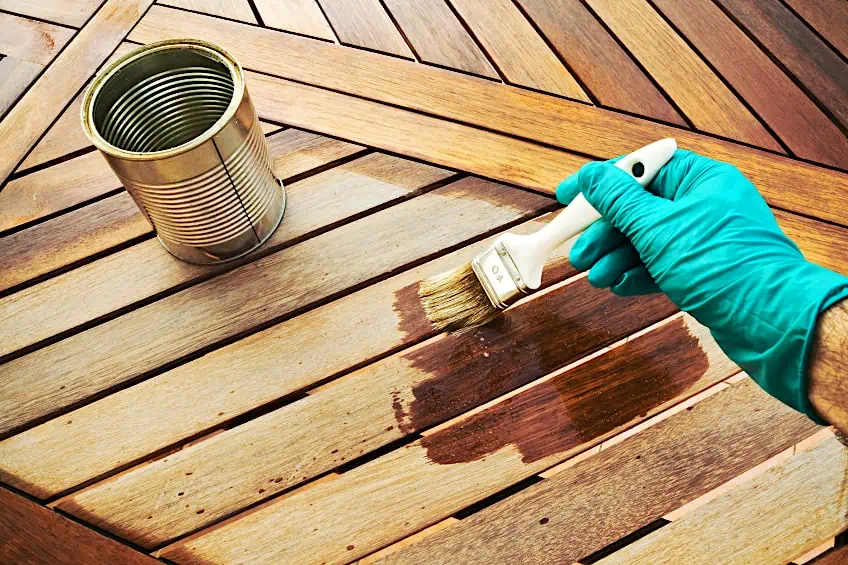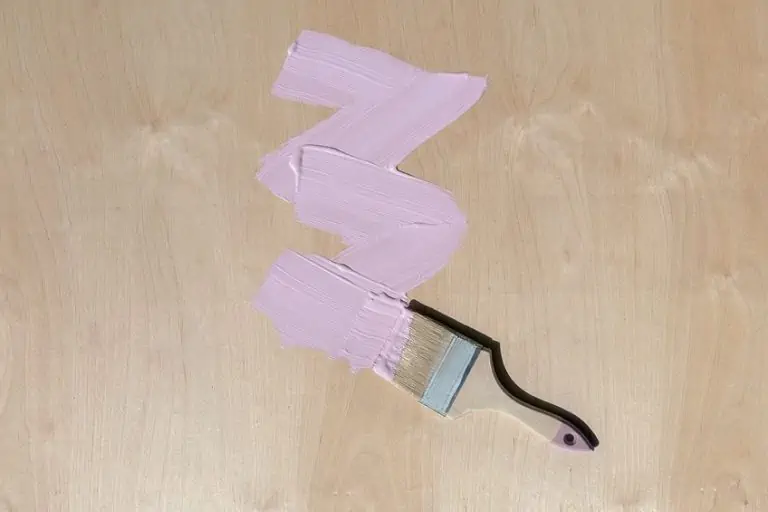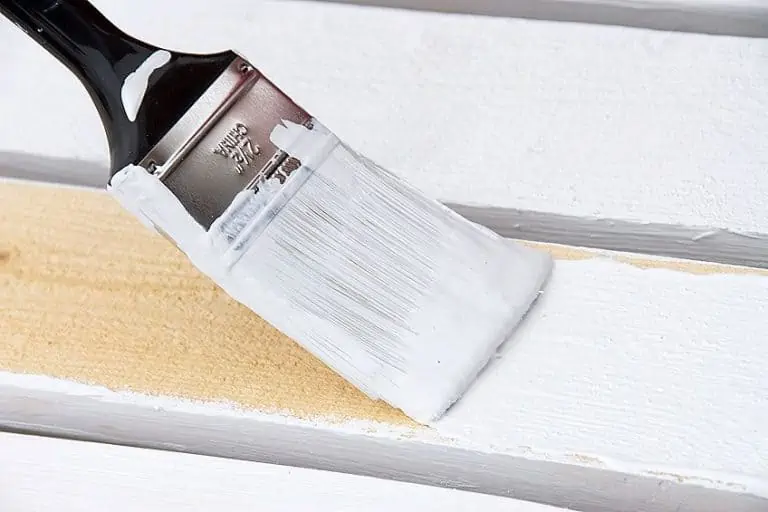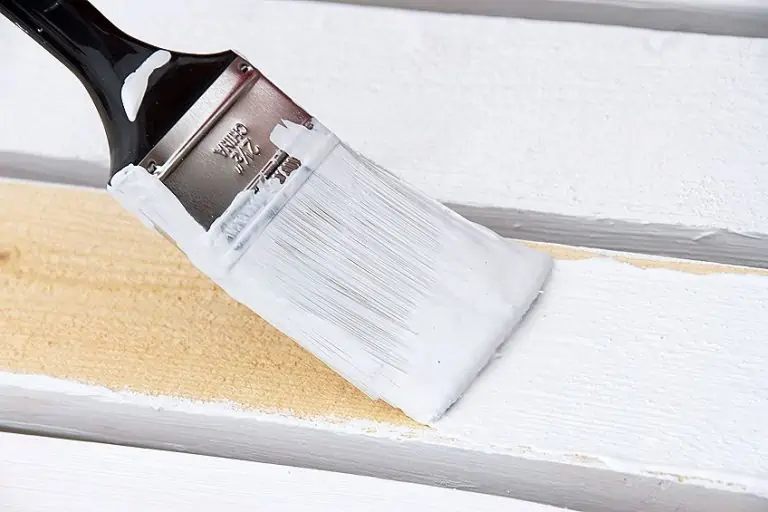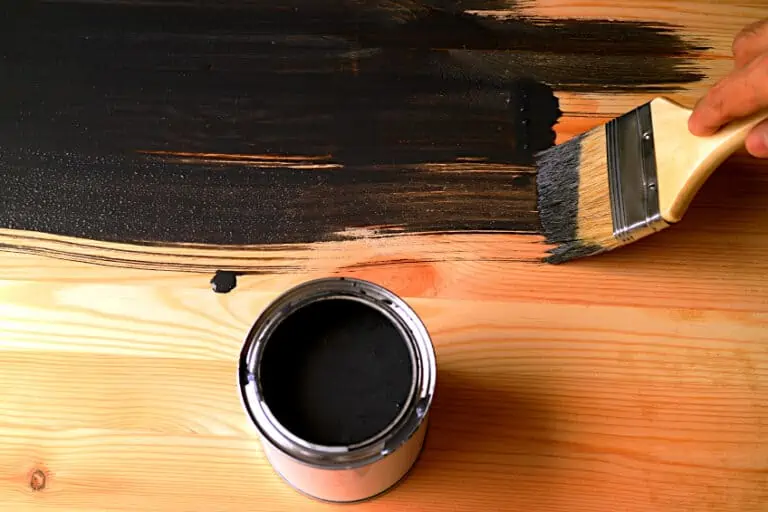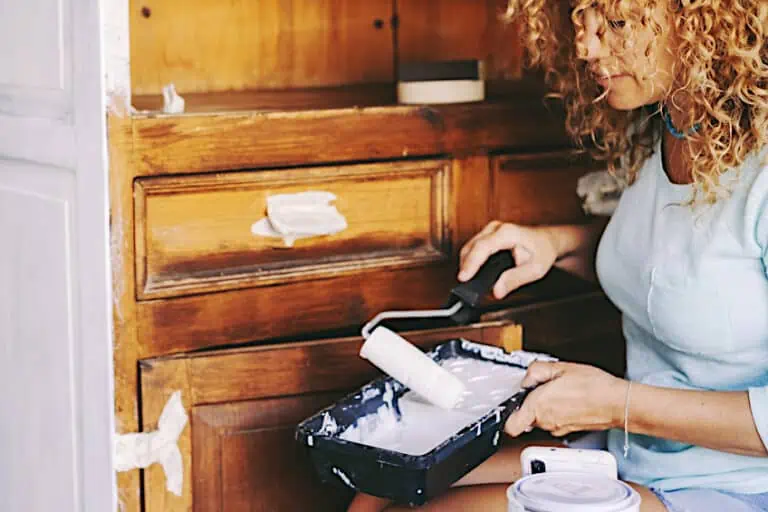How to Stain Acacia Wood – Tips for Staining Very Dense Wood
Wood stain is one of the best ways to improve the overall look of your workpiece, but it doesn’t always take as well as you’d like. Some wood species are rather dense, meaning that wood stains can have a difficult time getting into the pores of the wood. When this happens, you might consider starting from scratch with a different wood species, but there are ways around staining dense or pulp-rich wood. This problem is most commonly encountered when attempting to stain acacia wood, so we thought we’d put together a short guide detailing how to stain acacia wood, what makes the wood difficult to stain, and how to achieve the best finish!
What Is Acacia Wood?
Knowing how to stain acacia wood is helpful, but understanding the wood holistically will allow you to do so much more with this beautiful wood species. Acacia is an extremely robust hardwood species that is capable of withstanding a variety of climates all over the continental United States. This wood species is revered among wood crafters for its versatility and durability.
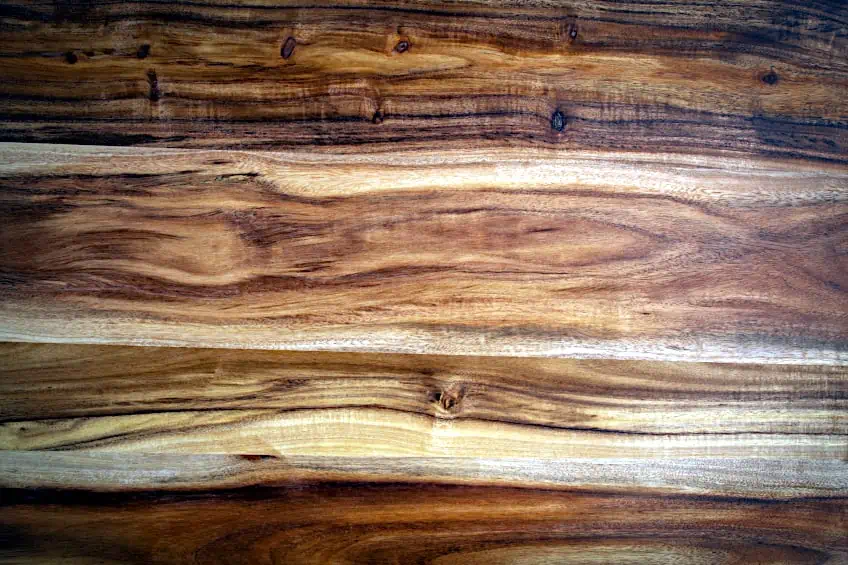
The fact that acacia wood can be locally sourced makes it the preferred choice instead of more exotic wood species that possess the same properties. It is also significantly cheaper compared to imported lumber, making it fairly sought after, especially in the high-end furniture industry. That being said, acacia wood is still noticeably more expensive than other hardwood species in its class.
Hardness
This makes sense, considering that it is one of the hardest of all the hardwood species available in the United States. What makes acacia wood so hard though? Acacia wood’s hardness is attributed to the density of its wood grain and its internal grain pattern. Aside from being considerably dense (which is what makes it so heavy) it has a multidirectional grain pattern.
This is primarily why acacia wood can be so challenging to stain, and even paint in some instances. Knowing how to work with dense wood species can save you loads of time, money, and frustration down the line. Even cutting acacia wood can be difficult as it tends to stick fast when processed dry, meaning that timing and precision are of the utmost importance when working with this wood species.
Color
Another reason that acacia is so popular is because of its color. Acacia wood has one of the prettiest natural color schemes of all the hardwood species, with the heartwood having a warm red color, and the sapwood having a light yellow or brown tone to it. This makes it an ideal candidate for the creation of small and large furnishings.
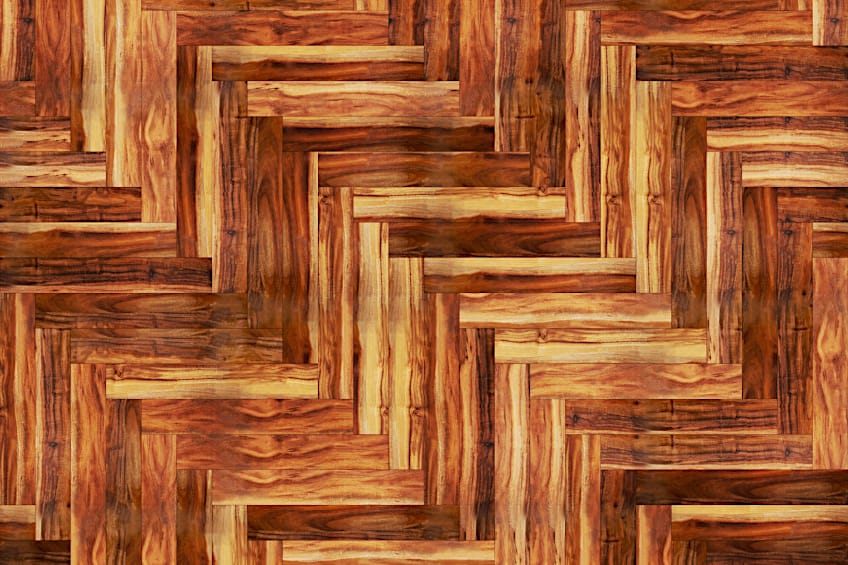
The color of this wood species is so striking that the wood is often simply sealed using substances like epoxy resin. Even this can be challenging due to the grain pattern and density, but most crafters seem to think that the end result is well worth the effort. After all, using acacia as your medium of choice means that your workpiece will likely last a lifetime.
Versatility
Acacia wood isn’t native to the US though. Acacia wood originates in Australia, but these days it can be found in South Africa, the US, and on the Pacific coast. That being said, there are around 1000 species of acacia, some with characteristics unique to their genus. One throughline among all of the species is their rigidity-to-flexibility ratio.
This characteristic allows the wood to be very hard while still remarkably pliable under the right conditions. This is yet another reason that this wood species is one of the most sought-after in the world, as it can be used in a variety of industries including DIY wood crafting, construction, furniture creation, and even the creation of tools.
Robust Nature
One of the most attractive qualities of acacia wood is its durability. While other hardwood species need to be treated with wood stains, pressurized chemicals, or an epoxy resin coating, acacia wood has a natural resistance to external forces that would seek to harm your workpiece. This is, once again, due to the density of acacia wood.
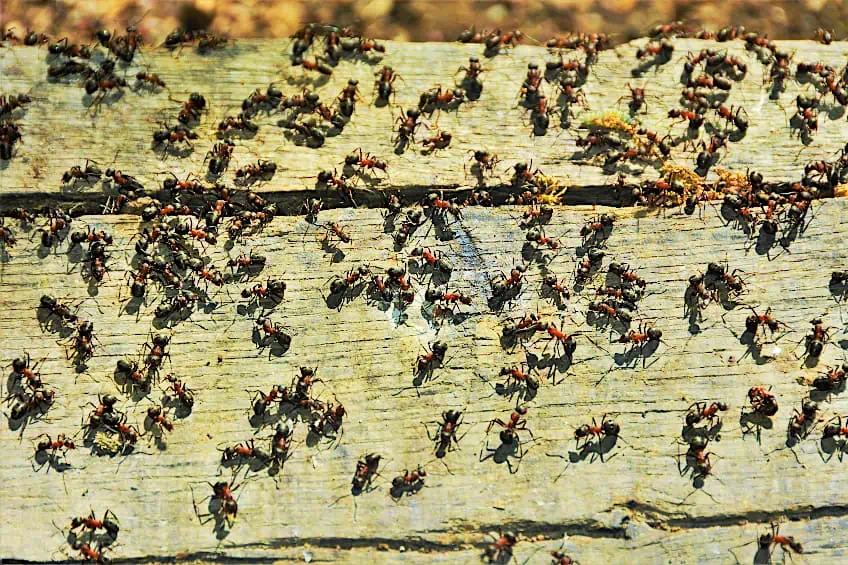
Acacia wood is so dense that it can be used for exterior applications without it taking much damage. Acacia wood has something of a natural immunity to things like insect infestation, mold, rain, airborne moisture, buffeting from the wind, and even the effects of prolonged exposure to heat. This makes acacia quite popular in various industries around the world.
What Are the Benefits of Staining Acacia Wood?
Staining the most common wood species is a good idea due to the fact that most of them could use protection. Acacia wood is capable of holding its own outdoors though, so what is the point of staining this wood if it already looks good on its own and is incredibly robust? Here are a few reasons for staining acacia wood workpieces.
Color Enhancement
The natural acacia wood color is stunning, but the color tone can be quite light. If you’re looking for a darker tone or simply want to make the existing color pop a bit, staining is a good option. This is typically the case when it comes to high-end furnishings, giving these pieces a distinguished, cozy feel to them.
Improving acacia wood color using wood stain can be done to both the heartwood and sapwood. Staining acacia wood, as with virtually every other wood species, will result in them becoming noticeably darker. This richer color might not be what you have in mind, so choosing the right color wood stain for your project by testing or looking at samples in-store can save you quite a bit of time and money.
Increased Durability
This is usually a positive unintended side effect of using wood stain. However, since acacia wood has a natural resistance to things like insects, moisture, rot, and heat, this might seem a bit excessive. In reality, this resistance will only last for a certain period of time, and if your workpiece will constantly be exposed to these forces, it’s well worth adding an extra layer of protection.
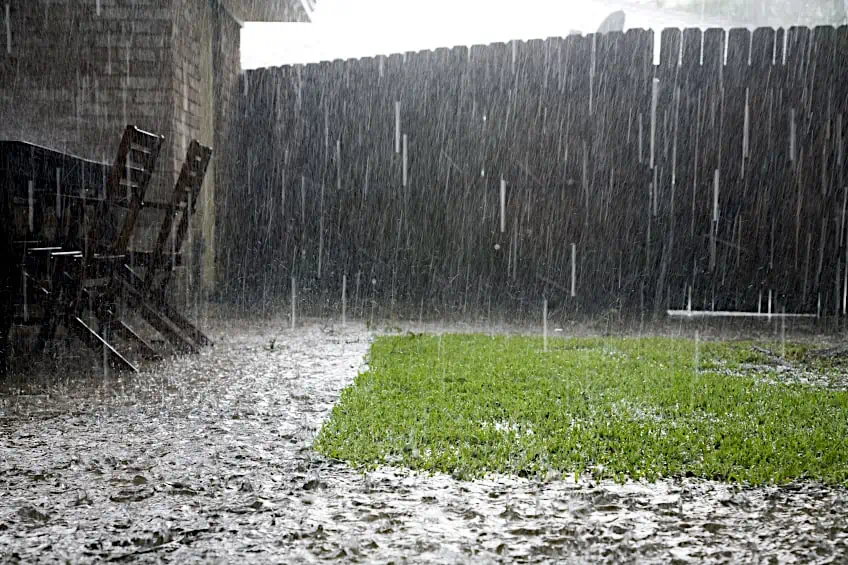
Wood stain, unlike paint or epoxy, acts as both internal and external protection for your wooden surface. Wood stain penetrates deep into the wood’s fibers and bonds with them to ensure that burrowing insects and moisture don’t destroy your workpiece from the inside. Simultaneously, it provides external protection from impact, abrasion, heat, and UV light.
Cost Effective Protection and Aesthetics
There are many reasons to stain your wooden workpiece, but one of the most enticing is the bang for your buck you get compared to other products. What do we mean? Well, you could get yourself some paint or epoxy, but they tend to be quite expensive, and they can be quite challenging to apply and maintain compared to wood stains.
Wood stains, on the other had, are relatively cheap. There are various qualities of wood stain for you to choose from, and lots of colors too! Applying wood stain is pretty easy too, you can use a brush, roller, or even a cloth to apply your wood stain directly to the surface of your workpiece and it should be ready to use in just a few hours.
Preserve the Wood’s Grain
If you’re a purist, or simply like the look and feel of wood grain, then wood grain might be what you’re looking for. Paint, epoxy, and even varnish tend to alter the texture of wooden surfaces to a degree. Wood stain is more of a wood treatment than a surface coating, which means that the grain and texture of your wood will remain untouched.
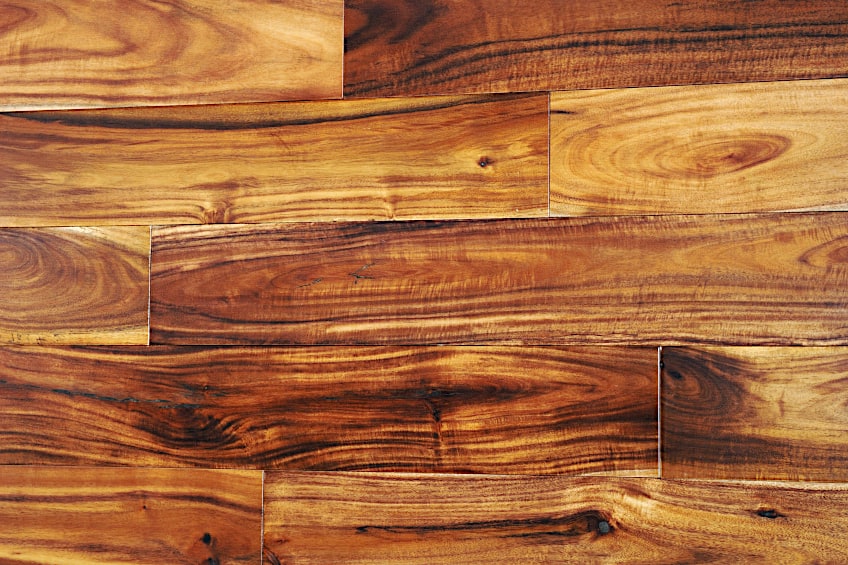
In some instances, wood stains can increase the prominence of your wood’s grain. Water-based stain in particular raises the grain of the wood it’s applied to, making the texture and contours of the surface more noticeable. The same cannot be said with substances like paint and varnish, but aesthetics are largely subjective, so we’ll leave that up to you.
How To Stain Acacia Wood
Of all the different hardwood species, acacia is arguably the most difficult to stain. As we mentioned previously, this is because of its dense wood grain and intricate grain pattern. The grain density makes it challenging for the wood stain to penetrate into the wood fibers, which can make the end result look patchy and uneven. Here are a few steps you can follow to ensure that your stained acacia wood looks consistent and smooth. Here are some things you’ll need:
- Fine grit sandpaper
- Rough sandpaper
- A tarp or some old newspaper
- A set of clean cloths
- A spray bottle
- Wood stain (your choice of color)
- A face mask
- A pair of gloves
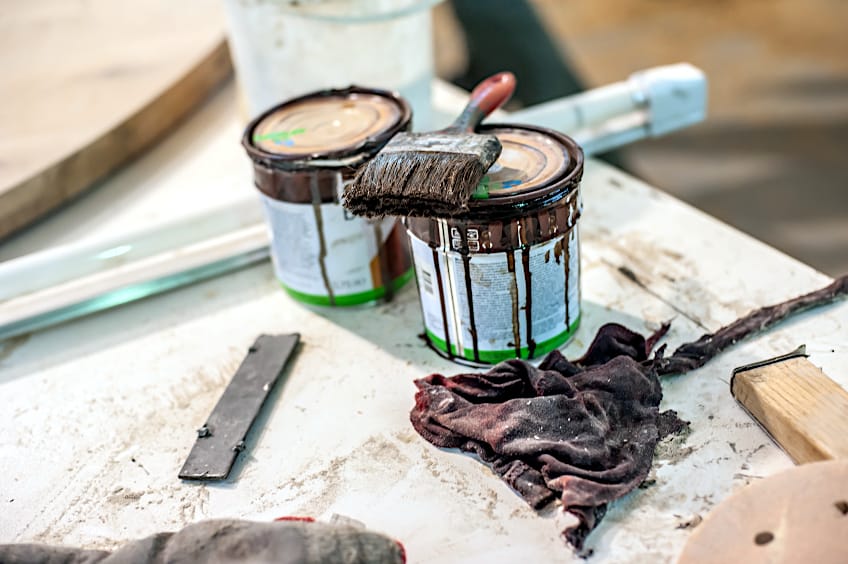
Prepare Your Workspace
Preparing your workspace is one of the most important steps in any wood crafting project. This ensures that both you and your workplace are protected from stray drops of wood stain and bits of wood that could be flying around. The first step in preparing your workspace is to lay down a tarp or some old newspaper to protect your flooring and any other surface that could get dirty or damaged.
If you’re using some old newspaper we recommend securing it with some painter’s tape to ensure it doesn’t move around while you’re working. Next, ensure that your workplace is well-ventilated and has adequate airflow. This is important, especially if you’ll be using a stain that contains VOCs like oil-based stains. Finally, ensure that you’re wearing the appropriate personal protective gear such as gloves and a face mask before moving on to the next step in the process.
Sand Your Surface
Sanding the surface of your workpiece is another important step in ensuring your workpiece accepts wood stain, paint, or any other addition you intend on using. That being said, the best way to ensure that your wood stain absorbs into the surface of your wood board is to sand the surface. This exposes fresh wood grain that hasn’t been conditioned over time.
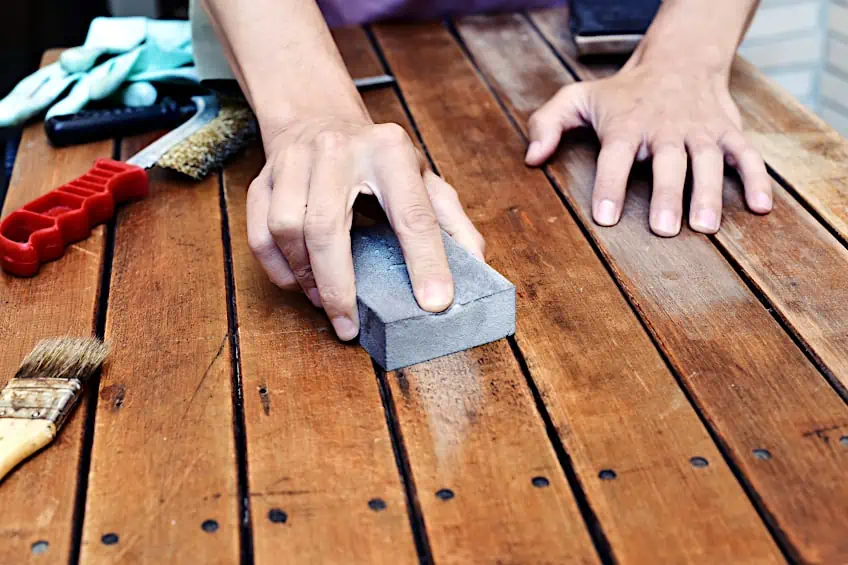
You can use whichever sandpaper grit you feel works best, but we recommend using rougher sandpaper initially and then transitioning to a finer one. Why? This raises wood grain while ensuring that your finish texture isn’t too rough. Start at one end of the board and work your way to the other, sanding in a smooth, even manner. Once you’re satisfied with the surface, move on to the next step in the process.
Raise the Acacia Wood Grain
Raising the grain of the wood is a common wood crafting trick to ensure that the wood stain is adequately absorbed. Raising the grain of a wooden board is pretty simple, all that you need is some water and cloth (or a spray bottle) and you’re pretty much good to go. There are two ways to go about this, depending on your preference.
The first method is to get a cloth nice and wet (but not dripping) and wipe it over the surface of the board. The second is to use a spray bottle on a fine setting to lightly wet the surface of the board. This should effectively raise the grain of the wood, just ensure that you allow the surface of the board to dry completely before you move on to the next step in the process.
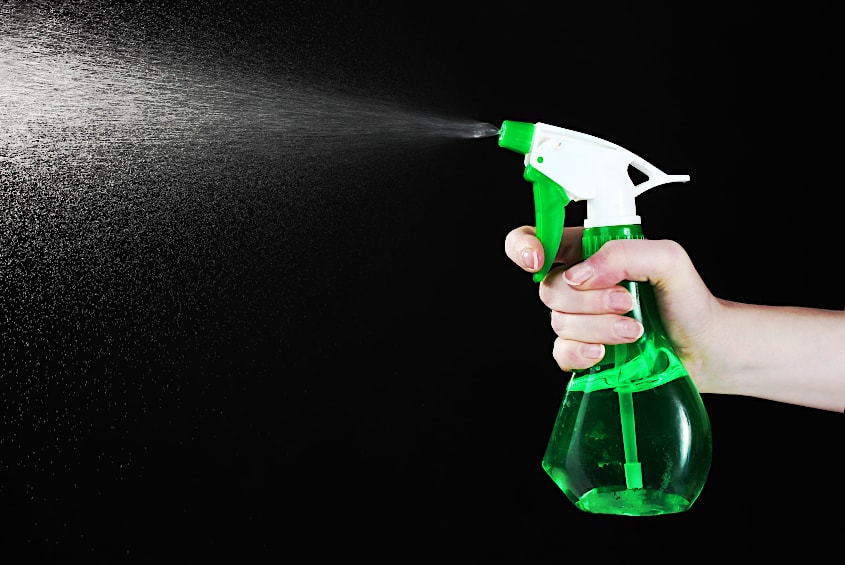
Stain Your Acacia Wood
Now that you have all the preparation out of the way, it’s time to stain your acacia wood! Before you apply your stain, you should have a strategy. The goal is to apply the stain evenly and precisely to avoid a blotchy finish. You can start either by applying the stain directly to the surface and rubbing it in with a clean cloth or applying it to your cloth and then rubbing it into your board.
We recommend choosing whichever method is most manageable for you. Once again, apply the stain evenly and ensure that all of the stains are absorbed into the wood while rubbing. If your workpiece is square or rectangular, we recommend working from one end of the board to the other. If your workpiece is circular or irregularly shaped, we recommend working from the center outward, or vice versa.
Whether you apply your stain directly to the surface or put some on your cloth, the trick to achieving an even finish is consistent pressure. If you apply too little pressure the stain won’t be absorbed correctly, if you apply too much pressure the cloth might absorb more stain than the wood. Ensure that your technique is consistent throughout the application process.
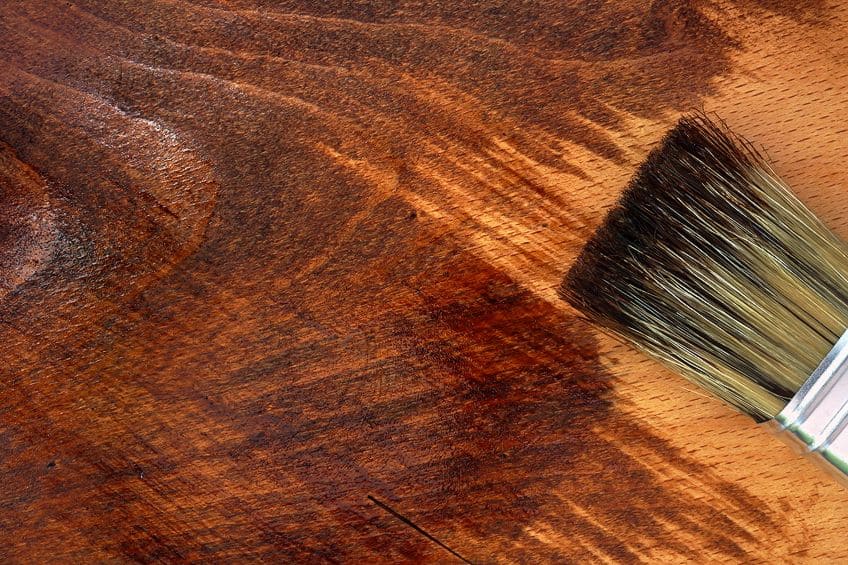
Once you’re happy with your staining job, allow the stain to dry and cure. You’ll notice that the surface has become noticeably darker and if you’re happy with the color move on to the next step in the process. If you aren’t, wait for the manufacturer’s recommended time period and repeat the application process until you’re satisfied.
Finish Your Acacia Wood
You’ll notice that the surface of your workpiece is rougher than it was before, after all, you did raise the grain of the wood. If you’re not happy with this texture, use some of the fine grit sandpaper you used earlier to lightly sand the surface to your liking. If the wood stain hasn’t penetrated as far as you’d like, you might need to add an additional coat of wood stain after staining. You can also use treatments such as tung oil, linseed oil, and beeswax to maintain your stained wood and extend its lifetime.
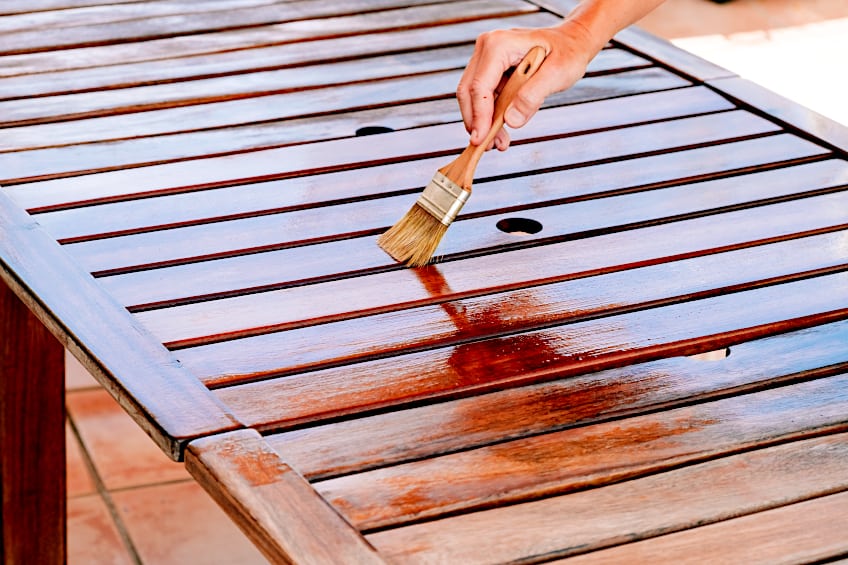
Now that you know what acacia wood is, some of its positive and negative characteristics, where it is found, what it is used for, and how to stain it, it’s time for you to get out there and put your newfound knowledge to the test. Remember to always wear the appropriate personal protective gear when working with wood stain, and that your workspace is well-ventilated.
Frequently Asked Questions
What Color Is Acacia Wood
Acacia furniture can be found all over the world, often stained and painted in different colors. What color is acacia wood when untreated though? Acacia wood naturally has light red heartwood and a white, or light brown sapwood.
What Is the Best Way To Refinish Acacia Wood?
Acacia wood is beautiful in its natural form, but it might not be the best look for every application. Wondering how to refinish acacia wood? Wood stain is one of the most popular finish options for acacia wood, but it can be challenging due to acacia being quite dense. All that you need to do is sand it well and then raise the grain, using a light mist of water.
Can Acacia Wood Be Stained?
While it might be a bit challenging, it is entirely possible to stain acacia wood. Acacia wood is quite densely grained, which means that you will need to sand the surface and then raise the grain to ensure that the stain is adequately absorbed.

I have been into woodworking since 2005 and woodturning since 2011. Because of my love for wood and woodworking, I started woodhappen.com to teach other enthusiasts about how to finish and seal wood, the best woodworking tools, the different types of wood, and everything else related to woodworking! Read more about me here.

